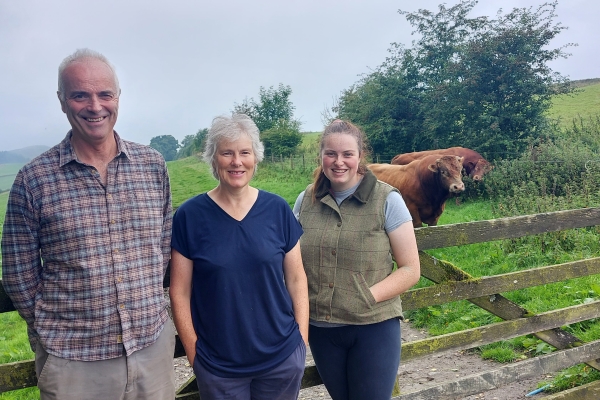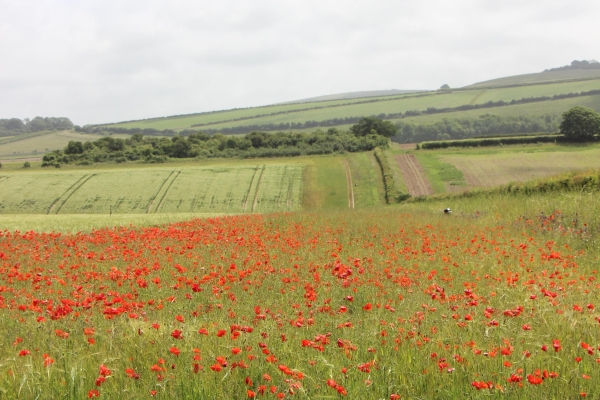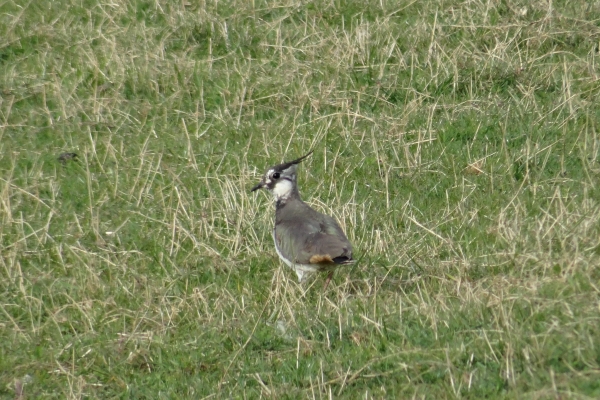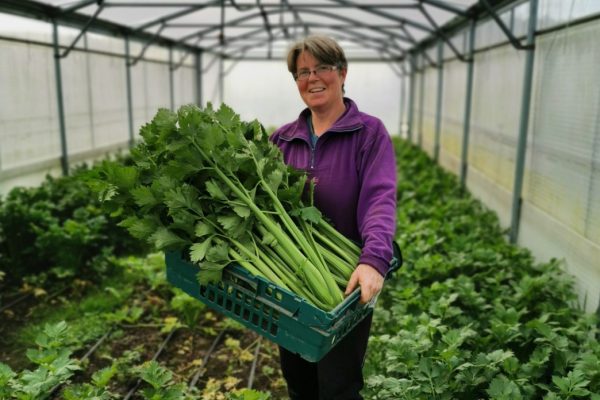More agroforestry … to support bird diversity!
Recently, agroforestry systems, i.e. the combination of trees with crops and/or livestock on the same piece of land, have been regaining attention … and not without good reason! While these systems were widespread in the past, over the last decades they have fallen out of favour in many regions across Europe, often linked with agricultural intensification where trees and hedges were hindering the use of large machinery. Fortunately, this mindset has started to change.
Many studies show that woody components play a crucial role in maintaining the resilience of the farmland ecosystems. In particular, the interactions between woody and non-woody elements can result in ecological and economic benefits, including increased productivity, better nutrient and water cycling, increased carbon storage, and reduced soil erosion. The higher structural heterogeneity of agroforestry systems, compared to treeless cropland or pastures, also results in a higher diversity of food resources and habitat structures. These in turn, as you may imagine, can support a higher biodiversity … of birds for example!
However, up until now, few studies have evaluated the effect of agroforestry on bird diversity in farmland systems. This was the gap we aimed to fill with our study, which was part of the AGROMIX project (a Horizon 2020 project, see here for more information).
We compared the diversity of breeding birds in mature agroforestry sites with purely woody systems (forests and tree plantations), and croplands or pastures without trees as a reference in seven European countries: England, Switzerland, France (two sites), Germany, Italy, Portugal and Spain. In total, nineteen agroforestry plots and thirty-four reference plots were sampled. We assessed bird diversity via audio recordings using AudioMoth® recorders which we set up in each plot three times over the course of the breeding season in 2021 and 2022.


After many hours of listening to the bird song recordings and identifying all the bird species I heard, and analyses of the data, the recordings have revealed the following:
- Bird species richness (the number of different bird species) in agroforestry systems was more than twice as high as in open agriculture, and similar to the diversity found in forests and orchards. This may be explained by the higher habitat heterogeneity of agroforestry systems, forests and orchards compared to open agricultural land. Trees are highly valuable habitat for birds; for nesting, finding shelter, and feeding.
- Bird community composition differed between habitat types and between European regions. Temperate agroforestry systems hosted fewer bird species than Mediterranean agroforestry (but still more than the open field in both areas), mainly generalist and woody-habitat species. The higher agricultural intensity in north-western Europe, leading to a sharper decline in bird diversity, could explain why we recorded fewer bird species here. For example, in England (Wakelyns), no birds were recorded at all in the open fields, while 7 different bird species were recorded across the three sampled agroforestry fields (Common whitethroat Curruca communis, European robin Erithacus rubecula, Great tit Parus major, Common pheasant Phasianus colchicus, Willow warbler Phylloscopus trochilus, Eurasian magpie Pica pica and Eurasian wren Troglodytes troglodytes). In the Mediterranean, where agricultural systems are less intensive than in temperate regions, bird communities in agroforestry systems were composed of species from both open and woody habitats, and thus these systems represent an important habitat for birds relying on semi-open conditions.
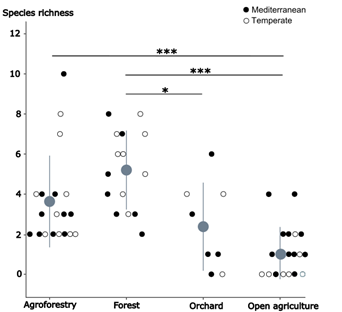

In summary, we show that agroforestry systems both in temperate regions and in the Mediterranean represent highly valuable habitats for birds. Their wider implementation across Europe could thus play an important role in halting and reversing the decline of bird diversity in European farmland.
In a nutshell: If you are motivated to implement agroforestry on your land, it is likely to have a positive effect on bird diversity since trees and other woody elements are important for bird diversity, especially in ecosystems where they have become scarce – such as in our modern agricultural landscapes. Agroforestry systems, which reintroduce farmland heterogeneity, can provide a compromise between production demands and nature conservation needs. They should certainly be considered as an option to combat the global biodiversity crisis! And finally, if we take a step, or a flight, back we should not forget that landscape diversity is the key for more biodiversity!
Have you become curious about our study and want to know more about the effect of agroforestry systems on bird diversity? Then have a look at our paper published in Agronomy for Sustainable Development in December 2023: Edo, M., Entling, M. H., & Rösch, V. (2024). Agroforestry supports high bird diversity in European farmland. Agronomy for Sustainable Development, 44(1), 1-12.) https://link.springer.com/content/pdf/10.1007/s13593-023-00936-2.pdf
All images courtesy of Manon Edo. All Rights Reserved.


